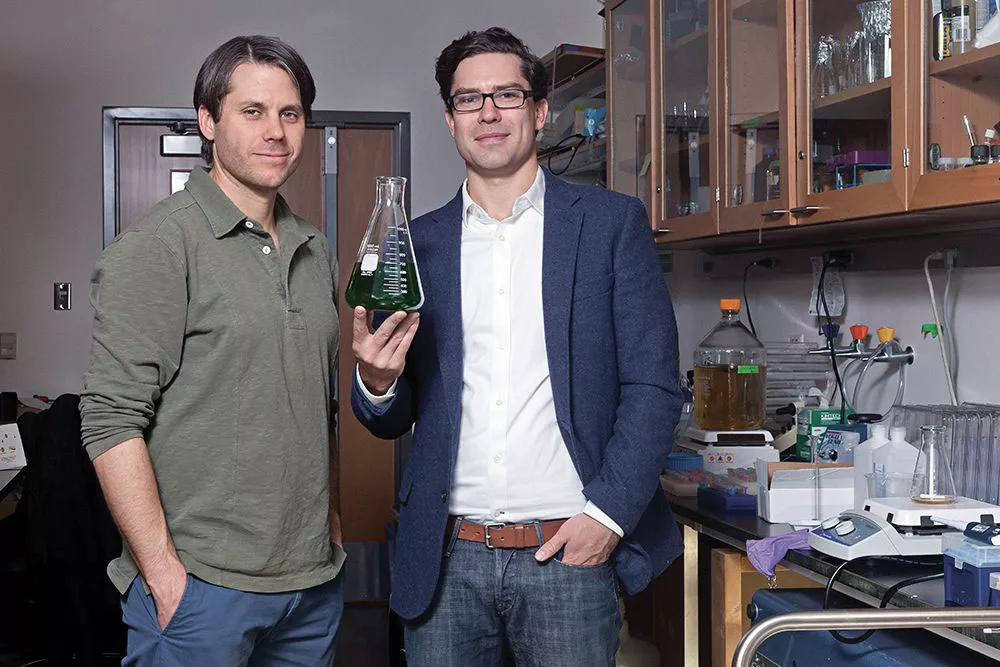What grows almost everywhere on Earth and produces more than half the air we breathe? Trees are a good guess, but the correct answer is algae.
The prolific little organisms can also replace petroleum-based black inks used to print everything from cardboard boxes to T-shirts, thanks to two Colorado State University graduates.
In 2013, Scott Fulbright (Ph.D., ’15) and Steve Albers (B.S., ’00; Ph.D., ’16) were both working toward advanced degrees in cell and molecular biology when they began searching for a sustainable substitute for petroleum-based carbon-black pigments using natural materials. They discovered algae, and the following year the two founded their company, Living Ink, at the Research Innovation Center on CSU’s Foothills Campus.
According to Albers, the composition of black printing ink has not substantially changed in 150 years – it is 80% petroleum and 20% pigment made of powdery particles of carbon known to be carcinogenic.
“The color black is everywhere but most people go through life not really noticing it,” said Albers. “Look around the room you’re in and identify all the things that are the color black. There’s probably a 99% chance they are made from petroleum-derived carbon black.”
In contrast, Living Ink’s algae-based pigment is renewable, biodegradable, and carbon-negative, because the algae absorb carbon dioxide from the atmosphere as they grow and produce oxygen through photosynthesis.
Living Ink sources its raw materials from a spirulina algae grower in southern California that first extracts a natural blue food colorant from it. What remains is converted into algae-black pigment in the company’s Berthoud, Colorado, manufacturing facility.

Eco-friendly disruptions
Despite the environmental benefits of algae-black ink, introducing an alternative into such an established market presents some challenges. The printing industry, for example, wants to keep presses running at a high volume, “so it’s hard to get them to slow down and justify taking the risk of trying something new,” Albers said. “If there’s not a model for innovation within an industry, it’s a big hurdle.”
Price is another barrier to adoption because petroleum is fairly cheap and abundant.
“Potential business partners have to want to tell an eco-friendly story and use sustainable ink for the other benefits it provides,” said Albers.
Disrupting multibillion-dollar industries is no easy task, but the substantial progress Living Ink has made is reflected in its business partners, which include some of the largest consumer brands in the world, such as Nike, Patagonia, Coach, Marmot, O’Neill, and American Eagle.
Producing algae-based inks to replace the petroleum-based blue, purple, and yellow inks used to print in full color remains a big engineering challenge, but Albers says a natural palette of colors is within reach.
“There’s a real opportunity for a lot of businesses to say, ‘Our colors are important to our brand but our sustainability mission is even more important.’ I think we can produce an algae-based color palette – it’s the next nexus of Living Ink.”